'Fifty Years On - Golden Jubilee of the Hahndorf Institute Extensions 1957-2007' - by Reg Butler |
| This document is a copy of a publication produced by the Committee of the Hahndorf Institute for the 'Golden Jubilee of the Hahndorf Institute Extensions 1957-2007' held on Sunday 14 October 2007. Permission has been granted for this reproduction. Copyright of the material in the above article is owned by the author, Reg Butler. Apart from any use permitted by the Australian Copyright Act, the author grants individual persons or organisations the right to use the material for private non-commercial use only, provided that the source of the material is clearly identified and that the material is not altered in any way. No other use of the material is allowed unless specific permission is granted by the author in writing. WWW links to this article are encouraged. |
Passing through Hahndorf one day, I saw a number of masons and labourers hard at work at the trenches … but on going up … I found them to be the leading people of the town. ----- Dr JA Cockburn MP 1893
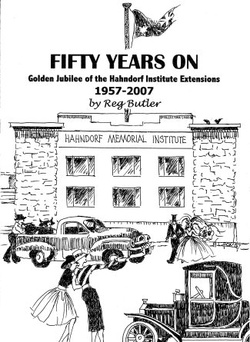 Front CoverCreative technology enables modern Hahndorf citizens staggering choice in keeping in touch with each other and the wider world. How very different the situation was in 1861 – the year the Hahndorf Institute first opened its doors for business. In so many ways, the village was isolated from the rest of South Australia, let alone further afield. Using a front room of flour miller FW Wittwer’s substantial two-storey main street residence, a handful of visionary souls now worked to develop a centre for townsfolk to enjoy wider intellectual and social contact to help fill this void.
Front CoverCreative technology enables modern Hahndorf citizens staggering choice in keeping in touch with each other and the wider world. How very different the situation was in 1861 – the year the Hahndorf Institute first opened its doors for business. In so many ways, the village was isolated from the rest of South Australia, let alone further afield. Using a front room of flour miller FW Wittwer’s substantial two-storey main street residence, a handful of visionary souls now worked to develop a centre for townsfolk to enjoy wider intellectual and social contact to help fill this void.
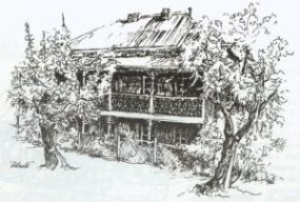 Sketch of FW Wittwer's ResidenceConstantly dogged by severely restricted funds, successive Institute Committees gradually amassed a goodly assortment of books, newspapers and periodicals, from both English and German sources, to form a lending library for Institute members to patronise. Constant lateral thinking brought together programmes of lectures, concerts and other social functions to appeal as widely as possible throughout the general community. Not surprisingly, the meeting of often fiercely independent minds on Institute business made for occasional tensions which required much diplomacy to resolve.
Sketch of FW Wittwer's ResidenceConstantly dogged by severely restricted funds, successive Institute Committees gradually amassed a goodly assortment of books, newspapers and periodicals, from both English and German sources, to form a lending library for Institute members to patronise. Constant lateral thinking brought together programmes of lectures, concerts and other social functions to appeal as widely as possible throughout the general community. Not surprisingly, the meeting of often fiercely independent minds on Institute business made for occasional tensions which required much diplomacy to resolve.
Almost imperceptibly, those makeshift Institute headquarters became practically the only indoor facility where Hahndorf people could gather and socialise regularly apart from Lutheran Church venues. It must be remembered that organised sport played almost no part in a daily life dedicated to basic survival. However, by the 1890s, community attitudes were changing remarkably. The whole town became involved in raising money for a permanent Institute building, erected without the services of an architect nor was any contract let, opened in grand style towards the rear of the present main street site in November 1893.
Hahndorf Institute President Allan Wittwer remarked succinctly in his detailed history of the Institute, released in a limited edition during 1982: The town, for the first time in its history, had an assembly hall which was publicly owned and fit for its needs … The Hall or the Institute as the new building was known rapidly became synonymous with entertainment in Hahndorf … and a valuable centre for education …’
 1957 Institute Committee - A committee of all the talents BACK ROW: Messrs Hermann Paech, Ben Kramm (President), Norm Paech, Dick Jaeger MIDDLE ROW: Messrs Eric Paech, Alec Johnston, Martin Kaesler (Secretary), Mac Green, Herb Wittwer FRONT ROW: Mesdames Lil Kuchel (Librarian), Frieda Kaesler, Vera Wittwer, Messrs Ewald Kaesler (Trustee), Gus Nitschke (Trustee), Tom Liebelt (Trustee)Add a captionTwo devastating world wars and several lengthy periods of severe economic depression prevented serious consideration of substantial modernisation of these facilities for the next sixty years. However, community self confidence gradually built up – Hahndorf had its original name restored in November 1935, and an overwhelming display of voluntary labour and fundraising produced a fine new community oval, opened in Pine Avenue during 1936 to commemorate the state centenary.
1957 Institute Committee - A committee of all the talents BACK ROW: Messrs Hermann Paech, Ben Kramm (President), Norm Paech, Dick Jaeger MIDDLE ROW: Messrs Eric Paech, Alec Johnston, Martin Kaesler (Secretary), Mac Green, Herb Wittwer FRONT ROW: Mesdames Lil Kuchel (Librarian), Frieda Kaesler, Vera Wittwer, Messrs Ewald Kaesler (Trustee), Gus Nitschke (Trustee), Tom Liebelt (Trustee)Add a captionTwo devastating world wars and several lengthy periods of severe economic depression prevented serious consideration of substantial modernisation of these facilities for the next sixty years. However, community self confidence gradually built up – Hahndorf had its original name restored in November 1935, and an overwhelming display of voluntary labour and fundraising produced a fine new community oval, opened in Pine Avenue during 1936 to commemorate the state centenary.
Impetus for building Institute extensions quickened significantly in the wake of hugely successful functions held in the Institute Hall to welcome home Hahndorf ex-servicemen and women after World War 11. A public meeting on 20 February 1947 resolved that in order to provide a suitable memorial to all Hahndorf Service Personnel, the present Institute should be remodelled and extended to meet modern requirements. Architect’s plans were actually drawn up and the merit of various ways to proceed debated. Prominent local citizens Doctor Theo Auricht and the engineer Ewald Kaesler achieved the amazing feat of collecting nearly £1,000 ($2,000 in modern-day speak) from the public in just one month to be salted away for the project. Sadly, in the event, nothing else tangible happened, because draconic post-war national building restrictions were still in force and could not be circumnavigated.
By the mid-1950s, however, Hahndorf shared in the vastly improved economic conditions which now developed throughout Australia. A re-invigorated Hahndorf Institute Committee decided to go ahead with the long postponed redevelopments. For the first time in the Institute’s long history, one of Hahndorf’s respected prosperous farmers, HB Kramm, had become president. Supporting him was a widely representative group of fellow residents – imbued with practical commonsense and determination to succeed within their means at any project they undertook.
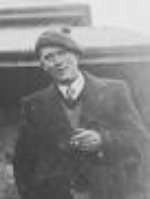 Bill Hope MurrayEarly in 1954, local retired Public Buildings Department architect Bill Hope Murray, who now enjoyed a pleasant existence as a mixed farmer from his home in the former Grunthal Mine manager’s stone residence on Beaumont Road at nearby Verdun, accepted an invitation to draw up preliminary plans for a new Institute complex abutting directly on to Hahndorf’s main street. This concept took into account the dire twin challenges of a narrow steeply sloping site and voluminous seasonal water seepage. Since childhood days on the family’s Mount Beevor estate near Harrogate, Bill Hope Murray had been consciously aware of Hahndorf’s proclivity for damp walls and rickety stairs, fed as he was on his older brothers’ tales of student life at rambling Hahndorf College. Perhaps more significantly, he already had the Hahndorf Bandstand, constructed in 1935 on Pine Avenue, as a test run for his drafting skills in the interests of the town.
Bill Hope MurrayEarly in 1954, local retired Public Buildings Department architect Bill Hope Murray, who now enjoyed a pleasant existence as a mixed farmer from his home in the former Grunthal Mine manager’s stone residence on Beaumont Road at nearby Verdun, accepted an invitation to draw up preliminary plans for a new Institute complex abutting directly on to Hahndorf’s main street. This concept took into account the dire twin challenges of a narrow steeply sloping site and voluminous seasonal water seepage. Since childhood days on the family’s Mount Beevor estate near Harrogate, Bill Hope Murray had been consciously aware of Hahndorf’s proclivity for damp walls and rickety stairs, fed as he was on his older brothers’ tales of student life at rambling Hahndorf College. Perhaps more significantly, he already had the Hahndorf Bandstand, constructed in 1935 on Pine Avenue, as a test run for his drafting skills in the interests of the town.
During the course of 1955, the South Australian Institutes Association executed the necessary detailed building specifications without charge, which the State Government approved. Subsequently, the Savings Bank of South Australia agreed to finance a thirty-year loan of £5,000 to pay for the ambitious undertaking.
 South Side Elevation of Proposed Hahndorf Institute Extensions - Note (left to right): the various factors considered when joining the old and new Institute buildings; the earthworks needed before laying the foundations; the involved masonry work required to erect the entrance foyer.All this initial preparation, of necessity, took place largely out of the public gaze. Imagine the astonishment when Hahndorf residents suddenly witnessed the contents of the Institute Library cross the main street into temporary quarters in the decaying former Hahndorf College building as 1955 drew to a close.
South Side Elevation of Proposed Hahndorf Institute Extensions - Note (left to right): the various factors considered when joining the old and new Institute buildings; the earthworks needed before laying the foundations; the involved masonry work required to erect the entrance foyer.All this initial preparation, of necessity, took place largely out of the public gaze. Imagine the astonishment when Hahndorf residents suddenly witnessed the contents of the Institute Library cross the main street into temporary quarters in the decaying former Hahndorf College building as 1955 drew to a close.
General enthusiasm suddenly welled. The Institute Committee formed a comprehensive building committee including townsfolk to augment its own ranks in early January 1956. Even before this body came into existence, the first of a series of community busy bees, using Mount Barker Council equipment on loan in high summer heat, had begun the arduous labour of demolishing the old Library and Reading Room which formed the front façade of the original 1893 Institute building. After the existing front garden had been cleared, local resident and Mount Barker Council works foreman Gordon Bernhardt, in a largely problem-free exercise, drove a Council bulldozer to excavate the new Institute Hall site abutting the main street. Much of the resulting soil and rubble from all these operations became suitable landfill for a new car park level with Auricht Road to the rear of the original main hall.
Co-incidentally a year later, the site was ready for Senator EW Mattner to lay the foundation stone on Saturday morning 19 January 1957 before a large and appreciative crowd spilling over the adjacent footpath and mingling with the building equipment. Extremely well-known in the district, Ted Mattner was an LCL South Australian member of the Australian Senate in Canberra. He regularly employed a number of Hahndorf labourers and engaged others as occasional contractors on his extensive farm on Junction Road between Balhannah and Littlehampton.
Forming a backdrop to proceedings rose a forest of scaffold poles constructed of sturdy stringybarks taken from grazier Clarrie Wuttke’s paddocks on Yantaringa Road between Paechtown and the Echunga Road. District builders for years had sought out these strong saplings, a regrowth around the butts of trees from earlier clearings, generally some six metres high and of even thickness, for building purposes. The rough outer bark proved ideal for assisting tightly knotted rope, an art to achieve in itself, to maintain position.
Already, back in November 1956, the substantial concrete foundations, including a permanent niche for the foundation stone, had been poured in ideal drying out weather, and against the main street, several layers of freestone wall had subsequently risen. Strategically along the footpath, further mounds of fine quality facing freestone from Walter Wright & Son’s quarry at Stirling lay waiting for the masons to continue construction.
 Gus NitschkeLocal builder and Institute trustee Gus Nitschke had accepted the Institute Committee’s invitation to erect the new extensions. This decision accorded with popular sentiment. Gus was the latest of four generations of masons stretching back to his great-grandfather FW Nitschke, who headed one of Hahndorf’s fifty-four founding families in 1839 and is still remembered for having constructed the Nain Lutheran Church near Greenock, the oldest building still in constant use as a Lutheran principal place of worship in Australia.
Gus NitschkeLocal builder and Institute trustee Gus Nitschke had accepted the Institute Committee’s invitation to erect the new extensions. This decision accorded with popular sentiment. Gus was the latest of four generations of masons stretching back to his great-grandfather FW Nitschke, who headed one of Hahndorf’s fifty-four founding families in 1839 and is still remembered for having constructed the Nain Lutheran Church near Greenock, the oldest building still in constant use as a Lutheran principal place of worship in Australia.
Good townsman that he was, Gus Nitschke donated his personal work towards the cause. Along with his regular assistant mason, his cousin Art Nitschke, and their mortar boy Andrew Thiele, all well mature men, they had the extra help of Gus and Art’s younger cousin Benno Nitschke, and young Ian Paech who was just starting out in the building industry. Ian’s brother Russell also joined the team as a youthful builder’s labourer fit enough for constantly scaling equipment up and down the unprecedented heights which constructing the new Hahndorf Institute extensions involved.
This proved to be Gus Nitschke’s last building project involving major constructional problems. Two years later, he died of a massive stroke following a heart attack in the back yard of his Hahndorf residence when he raced home to locate equipment during house building at Stirling. Co-incidentally, his father Carl Nitschke had retired from the trade after completing a residence and adjoining shop for the Shueard family almost opposite across the road in Hahndorf’s main street way back in 1926. The need for abnormally high foundations had provided similar daunting professional headaches.
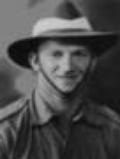 Andrew Thiele Andrew Thiele |
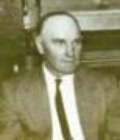 Benno Nitschke Benno Nitschke |
 Ian Paech Ian Paech |
 Fern Burgoyne Fern Burgoyne |
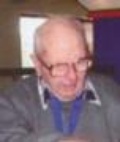 Bill Faehrmann 2006 (aged 80) Bill Faehrmann 2006 (aged 80) |
 Kevin Faehrmann Kevin Faehrmann |
Wider than normal scaffolding surrounded the new Institute foundations, because all stone, mortar and other equipment had to be carried in wheelbarrows to the builders. Local volunteers helped to sort stone, and mix mortar on vacant land level with Auricht Road at the rear of Mrs Alma Gallasch’s home next door. Five times the scaffolding rose to keep up with the masons, and on each occasion, a ramp of the same design for allowing wheelbarrow access to the new level in the laneway next to the post office had to be lengthened until the ramp planks stretched to the back of the old Institute building. Each barrow-load of equipment needed to be carefully unloaded by hand to avoid damaging falls to the ground.
Such constant high-rise activity, somewhat reminiscent of Ancient Egyptian pyramid-building, attracted many curious stares from passers-by with time to spare. It took two months to finish the intricate masonry work for the entrance foyer and stairs at the front of the new extensions, following which Gus and Art Nitschke worked on alone with Andrew Thiele for another month to tackle the more straightforward labour involved to complete the main body of the new hall above floor level. Working conditions were often uncomfortable, because fierce summer sun reflected heat from the light surface of the stone.
 Norm Kruse Norm Kruse |
 Howard Hill Howard Hill |
 Gordon Bernhardt Gordon Bernhardt |
 Herb Noske Herb Noske |
 Art Nitschke Art Nitschke |
 Max Noske Max Noske |
While Art Nitschke pointed the exterior stone facade, local plasterers, the brothers Bill and Kevin Faehrmann, took advantage of the scaffolding to plaster the outside coins, before facing the huge exercise of covering the interior walls. Another team of locals, brothers-in-law Fern Burgoyne and Charlie Tucker, had also moved in to begin the many carpentry tasks of erecting the roof, installing the hall floor, fitting the caneite ceiling and finishing off any other features involving wood. Afterwards, Institute Committeeman Mac Green's father-in-law, retired MTT tram driver George Brodie, followed behind swinging a hammer to settle down the countless nails in the main hall wooden floor boards.
Prior to plastering, yet another local, electrician Don Thiele, wielded a comb hammer to channel out spaces in the walls to insert wiring conduits immediately and leave room for a monster meter box and a myriad of light switches, which he installed later when plastering had concluded. Meticulous local painter Norm Kruse added harmony to the overall effect with his vital task of covering bare wood and metal according to the agreed colour scheme. All these tradesmen had to wrestle with a multitude of problems for seamlessly blending the old and new buildings into the one structure which would henceforth become the new Hahndorf Institute.
 Meanwhile, the tight-knit Hahndorf community had worked to raise funds to pay for the town’s lavish new wonder. Word seeped out concerning the plushness of the heavy burgundy-coloured curtains gracing the new stage. There was the prospect of fighting for seating rights over two hundred new-fangled Dunlopillo upholstered chairs (which local John Martin’s employee Jim Tunnah organised) while all the rest of a potentially four hundred-strong audience had to make do with the best of the legendary uncomfortable wooden seats salvaged from the old Institute Hall. Technically minded folk marvelled at the modern steel window frames; Clarkson’s representative took incorrect measurements for the middle panes and the firm’s glazier later impressed onlookers with his professional skill in trimming the glass to size, using only finger and thumb to guide the glass cutter cleanly and accurately along the considerable expanse.
Meanwhile, the tight-knit Hahndorf community had worked to raise funds to pay for the town’s lavish new wonder. Word seeped out concerning the plushness of the heavy burgundy-coloured curtains gracing the new stage. There was the prospect of fighting for seating rights over two hundred new-fangled Dunlopillo upholstered chairs (which local John Martin’s employee Jim Tunnah organised) while all the rest of a potentially four hundred-strong audience had to make do with the best of the legendary uncomfortable wooden seats salvaged from the old Institute Hall. Technically minded folk marvelled at the modern steel window frames; Clarkson’s representative took incorrect measurements for the middle panes and the firm’s glazier later impressed onlookers with his professional skill in trimming the glass to size, using only finger and thumb to guide the glass cutter cleanly and accurately along the considerable expanse.
 Ugly Man Sport Representatives 1957 - (left to right) Russell Grivell, John Pain, Valma Percy, Gail Paech, Yvonne Percy, Gwenda Percy, Ray Thiele, Jack Gommers (Ugly Man of Sport)
Ugly Man Sport Representatives 1957 - (left to right) Russell Grivell, John Pain, Valma Percy, Gail Paech, Yvonne Percy, Gwenda Percy, Ray Thiele, Jack Gommers (Ugly Man of Sport)
Residents trawled collective memories for successful fundraising activities which had financed the construction of the Pine Avenue town oval almost a generation earlier. Three Ugly Men – Howard Hill representing the RSL-CWA Clubs, Herb Noske up front for the Institute Committee, and Jack Gommers waving the flag for local sporting bodies – galvanised supporters into a lengthy and no doubt at times exhausting round of bugs, cards and film evenings, raffles and trading tables etc. The public also flocked to a monster barbeque which the Institute Committee held on the town oval. Temporarily deprived of a decent-sized hall, much improvisation occurred to tailor functions suitable for the much smaller Saint Michael’s school hall, the RSL-CWA Hall and the basement practice room of the town band rotunda on Pine Avenue.
Final touches were far enough advanced for the Institute extensions to open in October 1957. Light years removed from modern Hahndorf’s mass tourism-oriented functions, Hahndorf residents cared little more than indulging wholeheartedly in the deserved satisfaction of a huge undertaking mostly achieved through their own dedicated community effort. It mattered little that the State Premier Sir Thomas Playford or the local Federal Member for Angas, the Hon AR Downer, were unable to attend. Well-known local state MP, Mr HH Shannon, living just over the range at Bridgewater, declared the building open on 12 October, before a large and enthusiastic crowd basking in perfect spring sunshine.
Flanked by his loyal, and by now no doubt rather frazzled Committee colleagues, President HB Kramm, followed by another local worthy, Cr OB Male of the Mount Barker Council, and Mr WL Lewis, a visiting representative of the South Australian Institutes Association, variously rendered well-earned remarks of welcome, thanks and congratulation. The Hahndorf Town Band surpassed itself in non-stop festive music, calculated to lift spirits even higher and hopefully open wide purses at the fete which the three Ugly Men sponsored collectively in the new hall after the official ceremonies. Wicked thoughts passed through Hope Murray family minds, and no doubt amongst many onlookers too; was it a matter of Our hall for a bike when Bill Hope Murray happened to win the official raffle first prize – a gleaming new bicycle? Crowd numbers estimates ranged from between 800-1500; whatever the tally, the total duly impressed.
It did not pay to anchor bearings too firmly in the past. Awed throngs tripped up the new echoing terrazzo-tiled foyer entrance stairs and wended way through a new main hall illuminated by twin tube ceiling fluorescent lights and two-way dimming wall lamps – features hitherto mostly unheard-of for buildings in Hahndorf. People then endeavoured to re-orientate themselves to the fact that the former hall had become the supper room, and the former supper room had been transformed into a state-of-the-art kitchen boasting several stainless steel sinks and two 12-gallon electric coppers all with water laid on. Behind all this uncustomary convenience, the former stage had re-emerged as the Institute library. An enthusiastic Mount Barker Courier reporter found only admiring superlatives to summarise the occasion; A small community, working hand in hand, has created a wonderful property.
For blithe spirits who cared little for formal pomp, an incredibly youthful Max Noske, still going strong in 2007 as Blutwurst Macher and main street butcher, had marshalled a delightfully cheeky Procession of Progress exhibition of floats through an unusually crowded main street on the preceding Saturday afternoon, 28 September.
Lively banter greeted Max’s eldest brother Herb, the Institute Committee’s Ugly Man entrant, and supporters attempting to grill chops on a wood stove heaved aboard an old German waggon drawn by two horses. Kevin Faehrmann had managed to wash off remaining vestiges of his Institute plastering in order to steer one very ancient butcher’s cart propelled by just a single horse through Hahndorf’s central business strip, distracted no doubt by local general storekeeper Clarrie Miller’s eldest son Doug exerting his strength on merely an ancient pram containing strapping teenage youngest son Malcolm bundled up inside.
Hahndorf born and bred local chemist John Pain had temporarily abandoned his prim workaday white coat for a dashing neck-to-knee early 1900s bathing costume. Suitably attired, he drew upon his considerable cricketing and football techniques of attack and avoidance to direct unexpected mayhem upon teenager Gail Paech (now better-known as that dignified matron Mrs Russell Grivell) bedecked in a smart costume featuring a clever weave of the colours of all the town’s sporting teams in support of Ugly Man Jack Gommers’ utility and trailer float.
Shoring up enthusiasm for Ugly Man Howard Hill In rather more dignified fashion, a local representative of each of Australia’s three armed forces attempted to remain straight-faced while standing on the back of a slow moving patriotic flag-draped Bedford truck.
Onlookers also glanced respectfully at the Kaesler Brothers engineering works entry - a modern mechanical potato digger which the firm had invented and now mass-produced, towed behind a tractor driven by one of the firm’s progressive young employees John Fulwood. As a backdrop, Institute Committee stalwart Martin Kaesler flourished a rather ramshackle bucket and fork, surviving examples of the backbreaking harvesting tools from pioneering years.
To the lively strains of local Roy Kuchel’s band, indefatigable dancers thrilled to the rather novel experience of sweeping across a vast expanse of finely sawdusted pristine dance floor, at the Grand Opening Ball on 13 October, the Friday evening following the official opening. Mr Kuchel’s Pine Avenue neighbour, Len Keefe, for once scarcely needed his well-loved patter as MC to keep everyone moving. Still extremely popular with modern Institute audiences, the Lobethal Harmony Club tested acoustics even further in a Grand Opening Concert a fortnight later, on Saturday evening 26 October.
Such heady times could not last indefinitely. However, Hahndorf inhabitants quickly took these new Institute facilities to their collective hearts. Swiftly becoming a familiar part of the town’s landscape, the Hall and its guardian Committee inevitably endured variable support during the following fifty years.
Wondrously, despite occasional severe disappointment, the Institute again became debt-free after just nine years following the building of those innovative extensions, a magnificent achievement to challenge a twenty-first century world addicted to massive budget overruns. Sensitively aware of the vital benefits flowing from active nurture of community feeling, Hahndorf’s dedicated Institute Committee have continued to devote countless and often thankless voluntary hours to modernising and beautifying facilities still further to maintain appeal for a wide cross-section of clubs, activities and functions.
One instance to illustrate how fierce that loyalty to the Institute sometimes became; when the Friendship Club left the building to become the Senior Citizens Club at the recently erected Hahndorf Bowling Clubrooms in 1976, numbers of members refused to make the change and cancelled membership forthwith. To understand the history of the Hahndorf Institute holds part of the key to appreciating why the Hahndorf community is sometimes the uncomprehending envy of the wider world.
The fact of there being obstacles to overcome gave them more pleasure in successfully carrying out their object than if their path had been smooth.
DJ Byard - President
Hahndorf Institute 1893
ACKNOWLEDGEMENTS
I pay tribute to the painstaking, detailed collation which the late Allan Wittwer, local historian and long-serving Hahndorf Institute Committee member, undertook with the extensive archival material available concerning Hahndorf Institute affairs. Without his dedication, any publication to mark the golden jubilee extensions would have involved much further effort and lacked certain valuable insights.
For further information and photographs – Beryl Benham, Beryl Braendler, Robert Dewell, Bill Faehrmann, Anni Luur Fox, Joan Green, Don Grivell, Gail and Russell Grivell, Graham and Colin Hope Murray, Ruth Kaesler, John Nitschke, Max Nitschke, Janice and Max Noske, Alice Paech, Ian Paech, Mort Scholar, Roy Schroeder, Eric Shueard, as well as the relevant files of the Mount Barker Courier.
I also thank the Hahndorf Institute Committee for its unstinting support in bringing this publication to fruition through the technical skill of local resident Tony Finnis.
REG BUTLER
Hahndorf September 2007
REVISIONS and ADDITIONS
The following Revisions and/or Additions have been made to the original publication.
-
19 Oct 07 - reference to George Brodie hammering nails in main hall added.
-
19 Oct 07 - list of names in 'Acknowledgements' revised.
-
22 Oct 07 - Gail Percy corrected to Gail Paech in 'Ugly Man of Sport' photo.
-
18 Nov 07 - "Ugly Man of Sport' Representatives 1957 photo names corrected.


